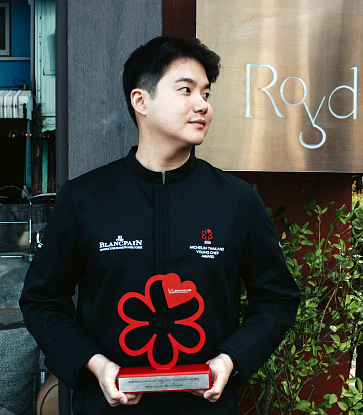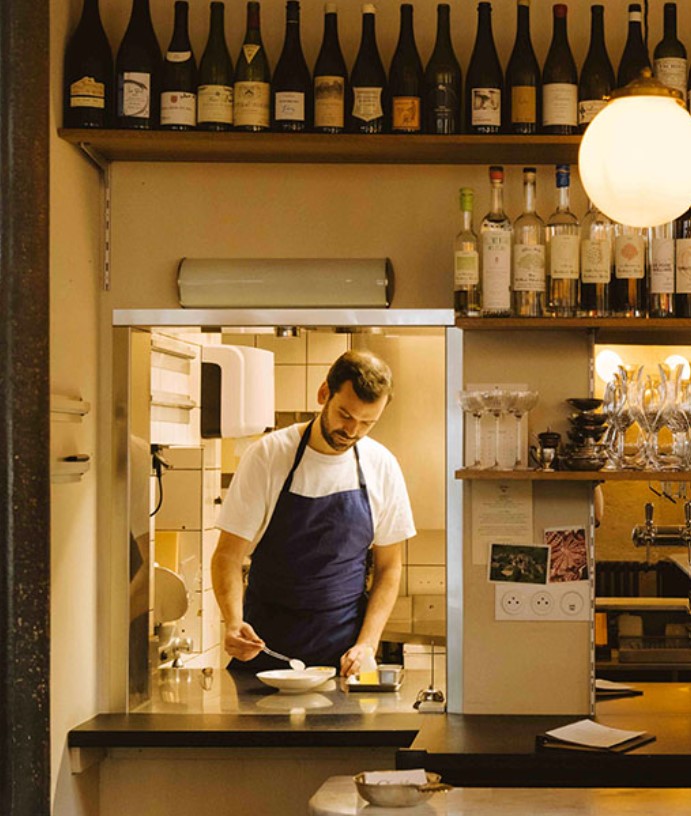For some, the pandemic has made the thought of travelling by public transportation less than appealing. Whether it’s visiting far-flung provinces or touring across a region, many people are opting for road trips all over Thailand. Driving yourself may take a little longer and may require overnight stays along the way. But the amazing upside is that you’ll have experiences that you might never have if you went directly to your ultimate destination.
So is the case with the way North from Bangkok to Chiang Mai. If you’re not in a rush, you can take your time on a road trip full of eating, touring, and shopping in diverse destinations. You can take in nature’s beauty across Tak. Or you could make the great journey to the borderland of Siam in Chiang Rai and go back to chill out in Chiang Mai. Sounds good? Then check your tyre pressure, get the car ready, and pack your bags. It’s time to hit the road!

Phra Nakhon Si Ayutthaya
Many people prefer to leave Bangkok early in the morning, making a breakfast stop in the Wang Noi neighbourhood of Phra Nakhon Si Ayutthaya. In addition to the Thai dishes you can find along the way, you could make a short detour into the historic city centre. The Old City is full of lovely cafes serving quality coffees as well as tasty treats. Many of them feature classic Thai desserts and sweets from the Ayutthaya era. Choose from a cafe serving modern treats, a dessert bar serving Ayutthaya-style sweets, or a coffee shop for Thai desserts served with a view of Wat Ratchaburana’s ancient stupas. For those who prefer a more filling meal full of local flavours, such as Ayutthaya-style boat noodles or grilled river prawns, there are plenty of popular places that people aim to get reservations to try at least once.
The Arts of the Kingdom Museum in Ko Koet has a unique learning centre all about khon, the distinctive Thai performing art. It covers everything from costumes, jewellery, and accessories to creating masks and the huge set pieces and scenery used in the intricate performances. Some of the scenery is made with advanced technology to produce motions and movements. New khon fans can now have fun as they learn about this performing part of Thai heritage. In the same museum complex is also a collection of national treasures that everyone should visit at least once. These masterpieces were created by artisans from 23 disciplines under the auspices of Her Majesty Queen Sirikit the Queen Mother’s Foundation for the Promotion of Supplementary Occupation and Related Techniques. And the souvenir shop is filled with artworks of historic to contemporary designs that would make wonderful mementos or gifts.

Ang Thong
Passing through Ang Thong, you should stop at Phra Phuttha Maha Nawamin Sakyamuni Sri Wiset Chai Chan at the Purple Temple. This 95-metre-high image of Buddha subduing Mara sits overlooking lush green rice paddies. Then, continue with a visit to the Reclining Buddha at Wat Khun Inthra Pramun, built during the Sukhothai period. And if you still have time to spare, we recommend dropping by the Si Bua Thong Handicraft Centre. Here they are preserving the ancient Thai art of khoi paper-making. You can watch the process and then buy some khoi handicrafts before you go.Hungry? Then head straight to the San Chao Rong Thong Market. Charming wooden row houses dating back over 100 years reflect the Chinese-Thai traditions that endure to this day, not to mention the food specialities you can find all around the market. Old-time Thai desserts, including khanom dok lamduan (flower-shaped shortbread cookies), khanom somanut (baked meringue cookies), khanom dokdin (steamed crocus flower jelly), khanom kasonchiak (coconut-filled rice crepes), and more fill displays and bellies at shops handed down through the generations.

Sing Buri
Sing Buri can no longer be missed because it has the historic Ban Bang Rachan, where traditional Thai life is captured in the old-style Ban Rachan Market, located in Wat Pho Kao Ton. Here, vendors dress in traditional costumes, recreating the Bang Rachan Village of old. In addition to selling traditional Thai sweets and food, villagers also sell seasonal fruits and vegetables. (The market is only open on weekends.)
Nakhon Sawan
Ever since Pasan was built, visitors to Pak Nam Pho snap more than the dragons of Utthayan Sawan Park or the vistas at Bueng Boraphet. Now, no trip to Nakhon Sawan is complete without a photo shoot at Pasan. Not only is the stunning bridge-like structure distinctive with its curves, it also has amazing views of the Chao Phraya River’s origin, where you can clearly see the Ping and Nan Rivers meet. The landmark’s inspiration stems from its name, Pasan, referring to the four rivers, Ping, Wang, Yom, and Nan, that merge (“pasan”) into the Chao Phraya, forming Pak Nam Pho’s prosperity. Inside the building are exhibitions on Thai history, culture, and traditions. There is also a courtyard with a shrine to the goddess Guan Yin, as well as light and sound displays illustrating life along the water from the past until today.Another new attraction features scenes from the popular drama, Krom Kam, in Chum Saeng District. Fans of the show and television buffs can visit the actual filming locations, including an old market, traditional wooden row houses, and the Chum Saeng Railway Station. For those who prefer a more waterfront atmosphere, Nakhon Sawan has many well-established floating restaurants, including Thai-Chinese eateries that have been around for over 60 years.
Kamphaeng Phet
If you’re heading to Tak from Nakhon Sawan, you’ll pass through Kamphaeng Phet. Many people may drive straight through the province, having rested and recharged in Nakhon Sawan. But for those who want to plan their road trip with stops in every province to Chiang Mai, Kamphaeng Phet shouldn’t be missed. There are many interesting historical and archaeological sites, including Kamphaeng Phet Historical Park, listed as a UNESCO World Heritage site. Within this ancient city, you can visit such sites like Wat Phra Kaeo, Wat Phrathat, Samon, Shiva Shrine, and Wat Klang Nakhon, for a start. There is also the Kamphaeng Phet National Museum, exhibiting many artefacts and antiquities connected to the World Heritage Site.
Tak
Tak is a border province ideal for nature lovers and hikers. There are the breath-taking waterfalls of Thi Lo Su and Pitukro within the Um Phang Wildlife Sanctuary, great for a visit during the colder months. However, it is often closed during the rainy season. Also, we cannot forget about the many mountain peaks that attract photographers from all over who want to catch a shot of the iconic seas of mist.For visitors who may not have enough time to trek into the wild or to climb the heights and who are looking for spots they can visit any time of year, we recommend Wat Phra Borommathat Chedi, where there are relics said to be lucky for those born in the Year of the Horse. You could also visit Bhumibol Dam, Thailand’s only arched concrete dam, where there’s a guesthouse you can stay at to enjoy the river and mountain views. It is best to make a reservation if you wish to stay a night or two. Trips into the city itself should include the Rattanakosin Bicentennial Bridge, considered to have the best views of the Ping River in Tak, especially at sunset. In the Chinese section (Ban Chin) of town, you can see lovely examples of Thai-Chinese heritage in the wooden houses that make for fabulous photos. Before heading out, don’t forget to try the famous Ban Chin phad Thai, where vendors still use the old-style recipe that calls for pork fat, creating a very fragrant dish served in the welcoming atmosphere of an antique wooden house.

Lampang
If you prefer to drive for long stretches from Bangkok and haven’t stopped anywhere special, Lampang is ideal for a rest to soak in its slow, relaxed pace. There’s plenty of culture and history as well, including the iconic Wat Phrathat Lampang Luang as well as Wat Pong Sanuk Nuea, which received a UNESCO Award of Merit for conservation, and Wat Lai Hin Luang, with its ancient wihan, or ceremonial hall, created and decorated by Chiang Tung artisans in the Lanna style. Take note of the intricate designs of the gable and archways, considered among the most beautiful in the North.Or, if you’re driving through during a weekend, you could check into a boutique hotel on the riverside and enjoy an evening along Kad Kong Ta Walking Street. Many consider this a highlight to any Lampang visit. You could rent a bicycle or hire a horse-drawn carriage. Each is a charming way to explore the town while helping to preserve Lampang’s local horse and carriage culture. Of course, there’s also many local specialities to try, including khao soi ko kha, khao soi islam, and khanom thai ma pranom. It is also a world-class kaolin ceramics centre, with many manufacturers offering high-quality work for factory prices. So, it’s a shopper’s dream. You can also show off your talent by painting your own work for a truly one-of-a-kind conversation piece.

Lamphun
Lamphun is the gateway to Chiang Mai. It is the smallest Northern province with a long history. Once it was the location of the Hariphunchai Kingdom, during the reign of Queen Chamathewi around 1,300 years ago. Lamphun is also a major centre for Yok Dok Thai silk, with many weaving operations where you can watch the weavers at work then select silk to buy. Lamphun’s Yok Dok Thai silk is famous as a designated geographical indication (GI) product that epitomises the province’s rich cultural heritage.You can also ask for directions to a famous wooden White House. The upper floor is a gallery exhibiting local artists’ works, and the lower floor is one half bar, cafe, restaurant, and bakery while the other half is a contemporary showroom of gifts, featuring products made in Lamphun.
Some tips before you go
- From Bangkok, there are two main routes to Chiang Mai: From Nakhon Sawan, you can head to Tak and Lampang or go through Phitsanulok. Or you can take the Phayao route to Chiang Rai then turn to Chiang Mai, returning via Tak for a lovely long round-trip road trip.
Travelling is a learning experience. This cold season, if you have plans for a road trip North, don’t forget to stop and experience the local communities along the way. You’ll encounter new and wonderful things for even more unforgettable memories, all while directly helping local economies.
During your travels, don’t forget to wear a mask, wash your hands, and protect your health. Also, be on the lookout for the SHA logo. SHA is a project involving the Tourism Authority of Thailand (TAT), Ministry of Tourism and Sports, with the Department of Disease Control, Department of Health, Department of Health Service Support, Ministry of Public Health, and others. SHA certification verifies the safety, hygiene, and sanitation quality of products and services of Thai businesses while promoting the quality of Thai tourism among travellers.
For more information about this project, please visit thailandsha.tourismthailand.org
Hero image: © Shutterstock




















